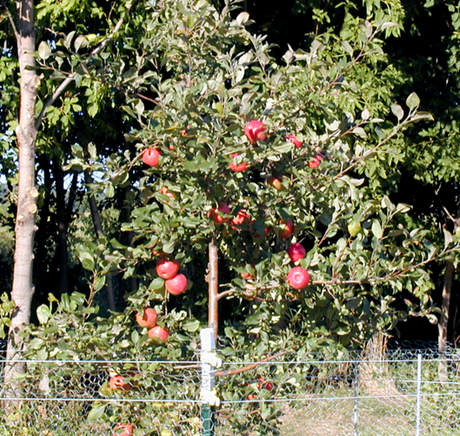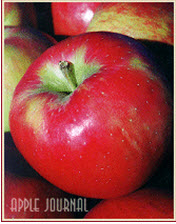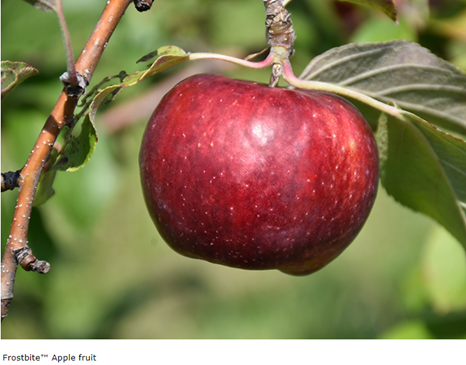Click below to listen to my 2 min. Garden Bite radio show: Apple trees for our northern climate
Audio PlayerOh, apple season, how I love you! Shall I count the ways or just name some spectacular cultivars. For those of us in cold climates, growing apples wasn’t always easy but with a lot of research by places like the University of Minnesota, that started breeding apples in 1888, we can grow some delicious apples!

I remember back in … a long time ago, the Landscape Arboretum had the first ‘Honeycrisp’ apples for sale. You could only buy one. They were huge and deep red and the best tasting apple I’ve ever had!
‘Honeycrisp’ continues to be the standard. In fact, the development of ‘Honeycrisp’ is recognized as one of the top 25 innovations of the decade by the 2006 Better World Report. Since ‘Honeycrisp’ trees were introduced in 1991 millions have been planted.

I just recently had my first ‘First Kiss’ (link from 2018 when they first came out) apple. Yowza, it almost has a sort of wine aftertaste, I mean that in a good way!

‘Frostbite’ apple trees fit a special niche. It is an extremely cold-hardy tree, making it perfect for Up North, zone 3! The small fruits have a tropical taste almost like sugarcane—tangy, very sweet and juicy.

If you plan on getting fruit from your apple tree/trees, you need two varieties or you won’t get anything. One can be a crabapple!
Growing Guide for Apples from the University of MN Ext. There is extensive information from how to select the trees, how to plant, how to care for them to disease and insect issues. PS, this works for our midwest northern climates!
As for planting, contrary to most trees, the U of MN says plant your apple trees in full sun in May or June, once all chance of frost is gone. Dwarf apple trees can start producing in 2 to 3 years, full size trees can be up to 8!
Before choosing an apple tree to plant, take a look around your neighborhood. A pollen source should be within 100 feet of the apple tree you plant to ensure the pollen gets to your tree.
If you don’t see any crabapples or other apple trees that close, your best bet is to plant two trees of different varieties.
